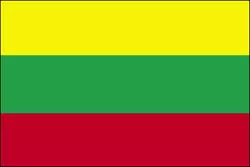In the 1300s the people and culture experienced their greatest outside influence to the culture and lifestyle when Lithuania united with Poland. Under this rule the Lithuanians almost wholly converted to Catholicism and the country expanded it political, economic, and educational institutes. However, this union also placed many ethnic Poles in positions of power and money, meaning the Lithuanians tended to remain tied to the lands; in fact, many cities at this time became centers of Polish culture.
The other great outside influence on the Lithuanian culture and lifestyle came in the form of the Russians and Soviets. Falling under Soviet rule, life changed dramatically in Lithuania. The people were heavily urbanized, the economy shifted to industry, religion was outlawed, and ethnic Russians immigrated in large numbers. The Russian language was also forced on the people, as were other aspects of Russian culture, although in many cases this only encouraged Lithuanian pride, strengthening their independence movement and creating a stronger Lithuanian identity.
Since independence, Lithuanian has again returned to its roots as life for many people is focused on the lands, the Lithuanian language dominates, Catholicism has returned (as has their famous hill of crosses), and traditional foods and traditions have survived and even thrived. However, these past influences have also changed the culture and lifestyle as new technologies have altered how work is done, the cities remain economic and educational centers, and there remains a Russian and Polish minority.
 The flag of Lithuania is yellow, green, and red. The yellow stands for the golden fields, sun, light, and goodness, the green represents the forests, nature, freedom, and hope, while the red stands for courage and the blood spilled in defense of the homeland.
The flag of Lithuania is yellow, green, and red. The yellow stands for the golden fields, sun, light, and goodness, the green represents the forests, nature, freedom, and hope, while the red stands for courage and the blood spilled in defense of the homeland.
Name: Republic of Lithuania
Independence: March 11, 1990; recognized September 6, 1991
Capital: Vilnius
Currency: Lithuanian Litas
Population: 3,515,858 (2013 estimate)
Ethnicity: Lithuanian
Language: Lithuanian
Religion: Roman Catholic